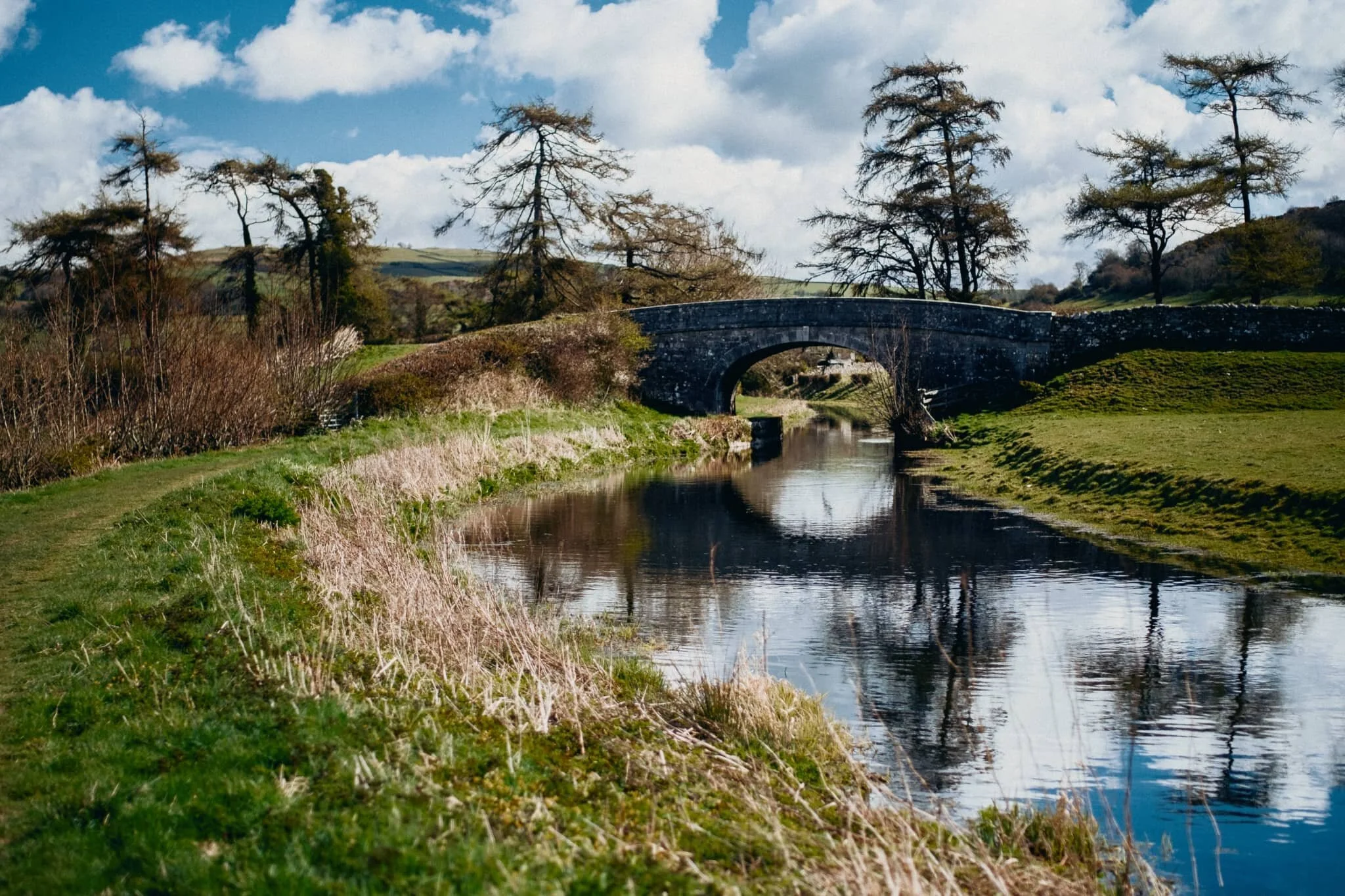Lancaster Canal, Cumbria, Spring
Today was a little more low key.
Today was a little more low key.
The last time Lisabet and I walked the “Northern Reaches” of Lancaster Canal was back in May/June of 2020. You should check those posts out for more of the history of Lancaster Canal, with greater detail about the Northern Reaches.
After a day around Grizedale Forest, we felt a simple walk alongside some of the Northern Reaches of Lancaster Canal was in order. In particular, the section from Millness to Duke’s Bridge, with Farleton Knott in plain sight, is stupendously pretty. And the weather didn’t disappoint either.
All photos shot on my Fujifilm X-T2 using a Samyang 35mm f/1.2 lens with a Marumi Super DHG circular polariser attached. Developed using RNI’s Kodachrome film profiles.
If you ever want to take a boat to explore some of the abandoned Northern Reaches of Lancaster Canal, this is where you do it.
Glorious spring light bleeding through the trees. It’s lovely to see all the leaves on the trees starting to sprout.
Looking back the way we came.
Popping out of the more wooded section of Lancaster Canal reveals the unmistakeable presence of Farleton Knott (265 m/869 ft). Whilst certainly not a large hill, it is nevertheless a striking silhouette.
Closer to Duke’s Bridge, with some cyclists ahead enjoying the day.
Just… a lovely little scene.
Farleton Turnpike Bridge (Nº 156) just before Duke’s Bridge, which signals the end of this section of the canal (and the path).
Hodgson’s Bridge, (Nº 157).
At Duke’s Bridge the canal opens out into a mooring/turn point area, allowing for some reflections of Farleton Knott.
Looking back all the way down the Canal path from near it’s terminus. Off-photo to my right, a pair of swans were busy building a rather comfortable-looking nest.
I can heartily recommend walking the Northern Reaches of Lancaster Canal for a non-taxing yet visually pleasing wander.
Part 2: Lancaster Canal’s “Northern Reaches”, Cumbria, Spring
The final stretch of Lancaster Canal.
The final stretch of Lancaster Canal.
In case you haven’t seen it you should check out my first photo blog about the Lancaster Canal, which contains the history of this iconic and important canal system.
The following day Lisabet and I decided to revisit the canal’s “Northern Reaches”, this time heading north from Millness Bridge (Nº 164) in Crooklands instead of south. This stretch is the final waterway of Lancaster Canal, which ends at Stainton somewhat abruptly. There are ambitions to re-water the canal for a quarter of a mile north of Stainton towards Kendal, and work has begun on repairing and upgrading Stainton Aqueduct after Storm Desmond wreaked havoc in December 2015.
All photos shot on a Fujifilm X-T2 with a 16–50mm f/3.5–5.6 lens using a customised Classic Chrome film simulation.
Looking back on Crooklands Bridge (Nº 166), which carries the B6385 over it. Another scorching hot day with barely any wind means very low water levels in the canal and pristine reflections.
Bulls and bullocks paddle in the waters of Lancaster Canal to cool down and have a sip.
Honestly, I were tempted to join them.
I kept waiting for this bull to look at me for this photo but it adamantly refused.
Not sure it’s possible to get a more bucolic scene of English rural idyll.
Old Hall Bridge (Nº 167) with almost perfect reflections; beyond you can just make out the slopes of Scout Hill (284 m/931 ft). On the banks before this bridge Lisabet and I were enthralled by a grey heron (Ardea cinerea), fishing in the waters of Lancaster Canal.
The end of Lancaster Canal at Stainton.
The next stretch of Lancaster Canal from Stainton, which has been relaid with lining and blocks. Not quite filled up yet, and of course it currently remains unconnected.
After Sellet Hall Bridge (Nº 173) the newly restored Lancaster Canal ends once again, totally dried up and reclaimed by nature.
Nature closing in on the 200-year old structures of Lancaster Canal.

